| Author |
Message |
|
Paul Schmidt
|
 Posted: Sat 16 Jan, 2010 10:11 am Post subject: Axes and handling Posted: Sat 16 Jan, 2010 10:11 am Post subject: Axes and handling |
 |
|
Hello everybody!
As a student of Liechtenauers longsword I have no clue about axes and their handling.^^
A fact I want to change...
What exactly are the features of a good axe made for war and how do they differ from a simple tool?
Of course, there should be some balancing (like any weapon) but I want to hear it from people with experience.
If possible we should distinguish between different axe types.
Thanks!
|
|
  |
 |
|
Josh MacNeil
Location: Massachusetts, USA Joined: 23 Jul 2008
Posts: 197
|
 Posted: Sat 16 Jan, 2010 11:56 am Post subject: Posted: Sat 16 Jan, 2010 11:56 am Post subject: |
 |
|
Hey Paul. Here is some great info about Viking age axes. It discusses some of the differences between an axe as a tool and one made for war. It also talks about some of the advantages an axe has in combat.
http://www.hurstwic.org/history/articles/manu...ng_axe.htm
There are also some great reviews of reproduction axes here on myArmoury. These should give you some extra insight as well. Hope this helps, and welcome to the forum!
|
|
   |
 |
|
Paul Schmidt
|
 Posted: Sun 17 Jan, 2010 6:06 am Post subject: Posted: Sun 17 Jan, 2010 6:06 am Post subject: |
 |
|
Hey Josh!
Thank you for the great link and a warmth welcome! 
I read some reviews but as long as I dont know who they wrote I am a little bit suspicous.^^
And: they are not that detailed. the link is better. 
The lInk:
I didnt read the whole text but until now they wrote nothing about the balancing. I mean how it is done, technically. Do you have some infos?
|
|
  |
 |
Jared Smith

|
 Posted: Sun 17 Jan, 2010 2:31 pm Post subject: Re: Axes and handling Posted: Sun 17 Jan, 2010 2:31 pm Post subject: Re: Axes and handling |
 |
|
| Paul Schmidt wrote: |
What exactly are the features of a good axe made for war and how do they differ from a simple tool?
Thanks! |
The link Josh gave you is pretty good. A lot articles on artifacts don't give the weight. Those that do often seem to indicate 1.5 to 2 lb range for axes that I would judge to have been for throwing or single handed use. The reduced weight and thickness, shape of the beard, and lack of a functional hammer at the heel seems to be the basic differences between axes/ tomahawks, franciscas, etc. made specifically for war versus axes intended to be farm tools. That said, some current day wood carving / timber framing type axes and adzes are roughly comparable in terms of weight and proportions. You might find an inexpensive "simulator" at a farm estate type auction.
Absence of evidence is not necessarily evidence of absence!
|
|
  |
 |
|
Philip C. Ryan
|
 Posted: Mon 18 Jan, 2010 12:50 am Post subject: Posted: Mon 18 Jan, 2010 12:50 am Post subject: |
 |
|
Paul, there really wouldn't be any "balancing" of an axe. It was/is a tool/weapon designed to make practical use out of the inertia gained from the weight of the axe-head on the end of the shaft. That inertia is what causes the axe to make such effective hits on its target.
Skjaldborg Viking Age Living History and Martial Combat
|
|
  |
 |
|
Peter Johnsson
Industry Professional
|
 Posted: Mon 18 Jan, 2010 1:54 am Post subject: Posted: Mon 18 Jan, 2010 1:54 am Post subject: |
 |
|
Axes made specially for war are markedly different from the tool axe.
Either you have rather small one hand axes that have been popular among mounted warriors from the very earliest times. These are light as a result of being pretty small. The tomahawk is a late period example of this. Sometimes the head is compact and wedge shaped with a very sturdy cross section and sometimes that blade is very thin: a butchers axe.
Weight is low: a kilo or sometimes much less for a complete weapon. Force of impact is from speed rather than weight. You get impressive effects as a result of the distribution of weight rather than the amount of mass.
Large two hand weapons are also as a rule pretty light for their size. There are monsters, but they are not the norm. Many of the viking broad axe heads weigh a kilo or less. The blade itself is a thin wedge of steel/iron and the edge is welded on and forms a reinforced ridge along the business end of the axe.
Later era axe type weapons, like halberds, poleaxes and berdishes have all pretty thin axe blades. The sharpness of the edge is shaped with a rather blunt edge angle on that thin blade. Sometimes the edge is blended into an apple seed section, sometimes it is left as a secondary bevel (like on many modern knives). The axe head on these are not simply cut from flat sheet metal: there is a difference in thickness from the head down to the edge. This is a way to maximize the use of the material, saving strength for where it is needed and reducing weight where it may be done.
 Attachment: 48.13 KB Attachment: 48.13 KB
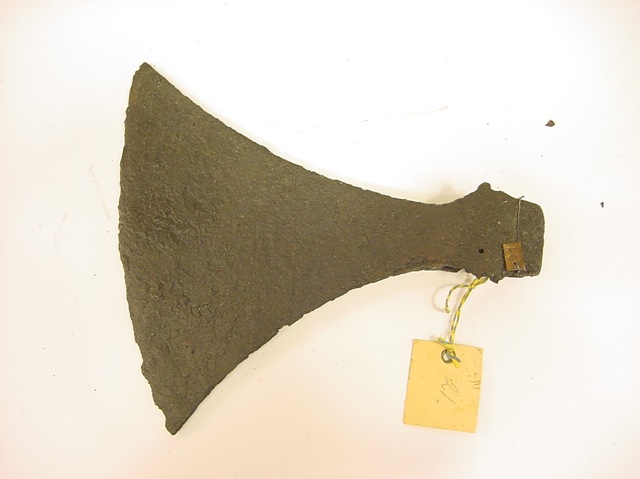
A nice medium sized late viking period axe. Can be hafted with a shoulder long haft, or a waist length haft.
 Attachment: 42.54 KB Attachment: 42.54 KB
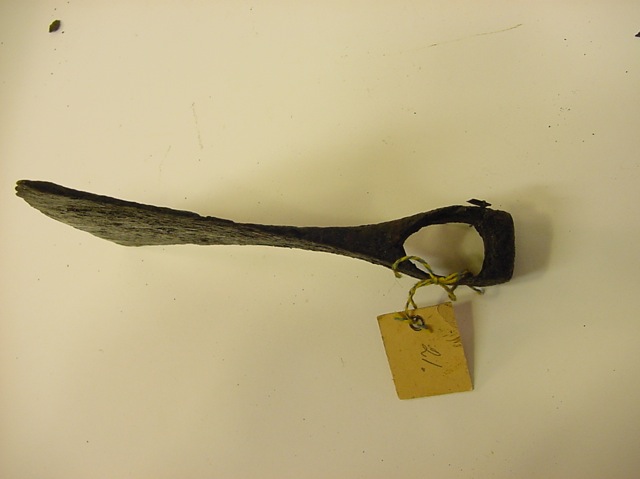
And here you can see the (lack of) thickness and shape of the edge
 Attachment: 87.36 KB Attachment: 87.36 KB
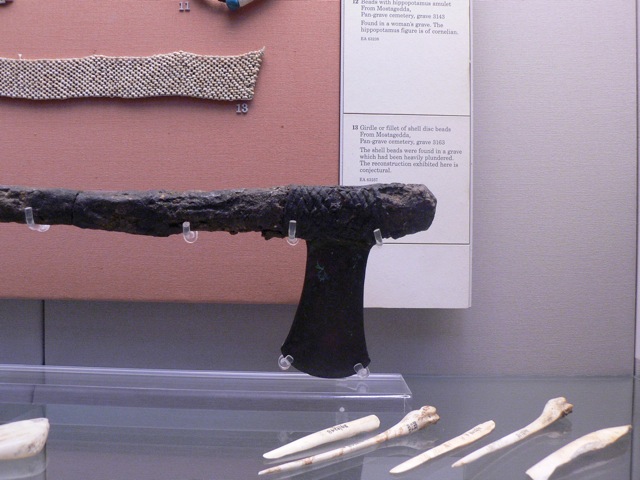
An egyptian battle axe of bronze with intact leather lacing. A light weight and deadly weapon.
 Attachment: 102.28 KB Attachment: 102.28 KB
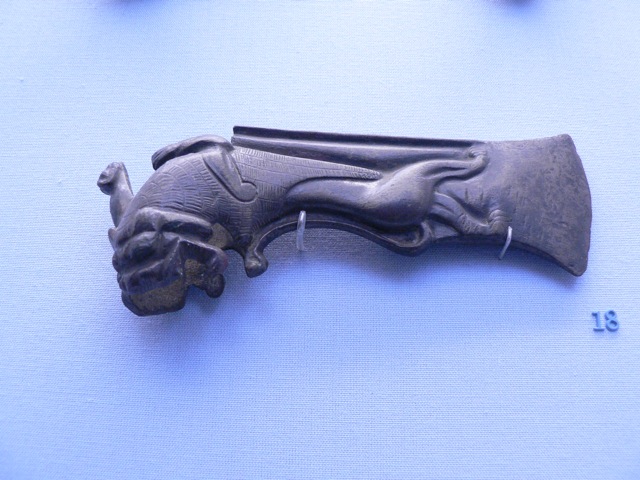
A beautiful bronze axe from mesopotamia. These are sometimes described as ceremonial, but I´m not so sure they were not used as weapons. This one has a well shaped edge.
 Attachment: 58.33 KB Attachment: 58.33 KB
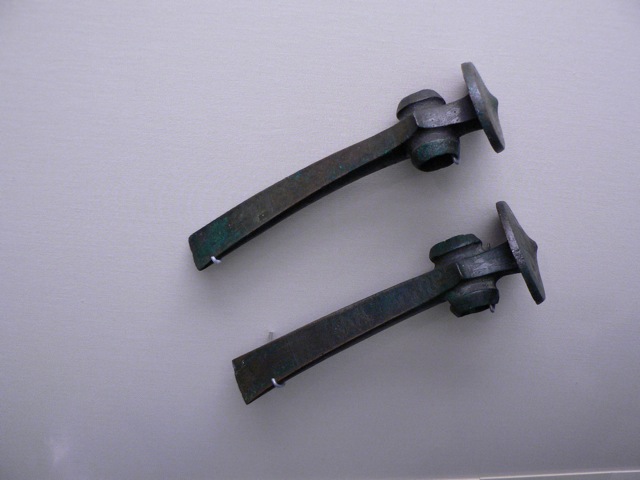
European bronze age tomahawks...
 Attachment: 110.62 KB Attachment: 110.62 KB
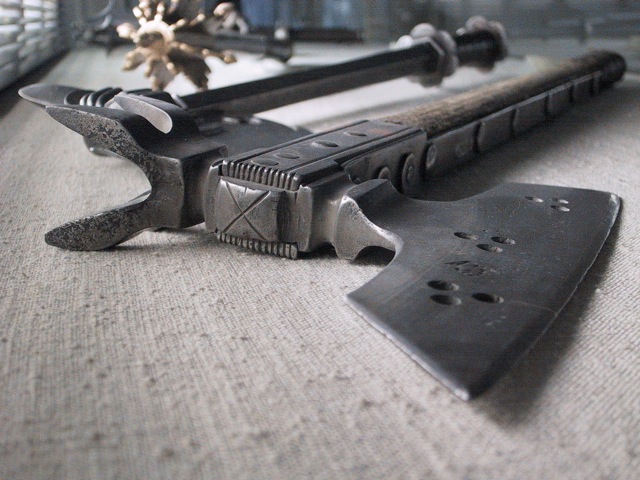
A late 15th C battle axe for use from horse back. Note the thin edge.
 Attachment: 75.91 KB Attachment: 75.91 KB

A pole axe. Note thickness of blade.
|
|
   |
 |
|
Paul Schmidt
|
 Posted: Fri 22 Jan, 2010 4:38 pm Post subject: Posted: Fri 22 Jan, 2010 4:38 pm Post subject: |
 |
|
Peter,
amazing post. Thank you very much!
Thanks to everybody for sharing their experiences!
There is at least one little question: how do we balance axes exactly? Is it through the pole length or a special counterweight like on swords?
greetings
Paul
PS: Where can I buy good axes (with pole)?
|
|
  |
 |
|
P. Cha
|
 Posted: Fri 22 Jan, 2010 6:21 pm Post subject: Posted: Fri 22 Jan, 2010 6:21 pm Post subject: |
 |
|
Small axes were balanced by the shaft..
Larger axes could have a bit of iron butt to act as a counterweight, but a well made war axe head was pretty well balanced with just the shaft.
Are you looking for any era in particular? So you want a large axe? Hand axe? Pole axe?
|
|
  |
 |
|
|

